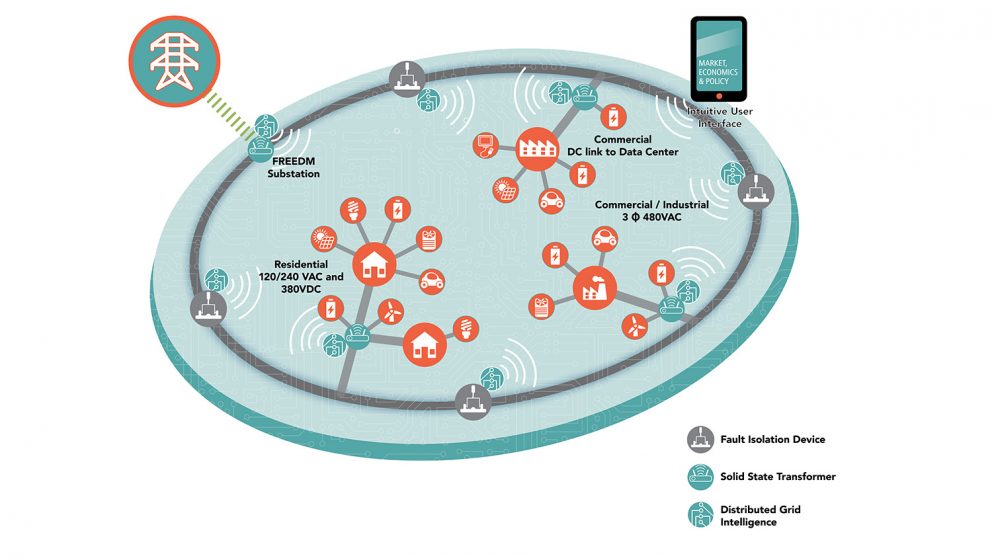
Caption: This diagram shows how solid-state transformers could be incorporated into a power system. Source: NCSU
A new smart grid could be on the way as researchers have tapped into complex computational models to find smart solid-state transformers (SST) that could be used for a stable and reliable smart grid.
Researchers from North Carolina State University believe this breakthrough could allow the power distribution system to route renewable energy from homes and businesses into the power grid.
“We know how individual SSTs work but the question since 2010 has been how they might work as part of a microgrid and how those microgrids may work in the context of the larger grid,” Aranya Chakrabortty, an associate professor of electrical and computer engineering at NC State and co-author of the paper, said in a statement.
“This is not something that the power industry can afford to get wrong and we need to ensure that the concept improves efficiency and is therefore worthy of investment without adversely affecting the stability and reliability of the grid.”
The researchers developed a complex, scalable model to simulate the behavior of a power distribution system, accounting for the SSTs, renewable energy sources, and energy storage.
The model can be used to predict the behavior of power distribution systems of any size.
The smart grid would have a number of benefits including an improvement in the efficient use of renewable energy and storage.
However, for a smart grid to operate the researchers said system designers and operators would need to ensure that the system–at every level—is taking into account customer power demand, power generation from renewable sources and energy storage capacity in order to avoid proving too much or too little power.
“Addressing that challenge is one of the things that SSTs are designed to address,” Iqbal Husain, ABB Distinguished Professor of Electrical and Computer Engineering at NC State and director of the FREEDM Center, said in a statement.
“Now that we know the grid would work better with SSTs, our next step is to develop the algorithms necessary for SSTs to make the split-second decisions needed to keep a system within its operational bounds—something we’re already working on,” he added. “We plan to demonstrate this capability in less than a year, and hopefully within the next six months.”
Transformers, which are found in substations and at distribution points within the larger power grid, convert the high voltage power used in power lines to lower voltage power that can be used safely in homes and businesses.
The study was published in IEEE Transactions on Power Systems.




